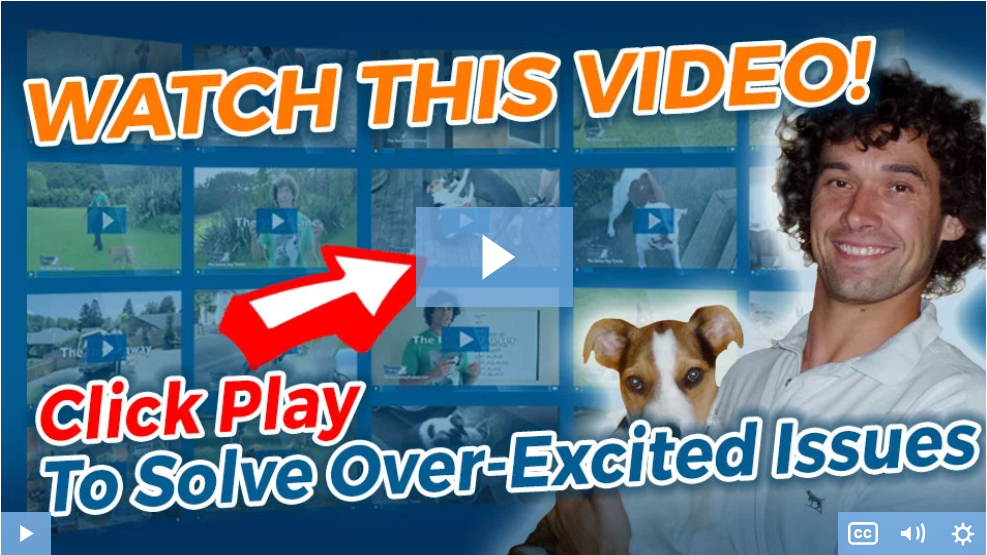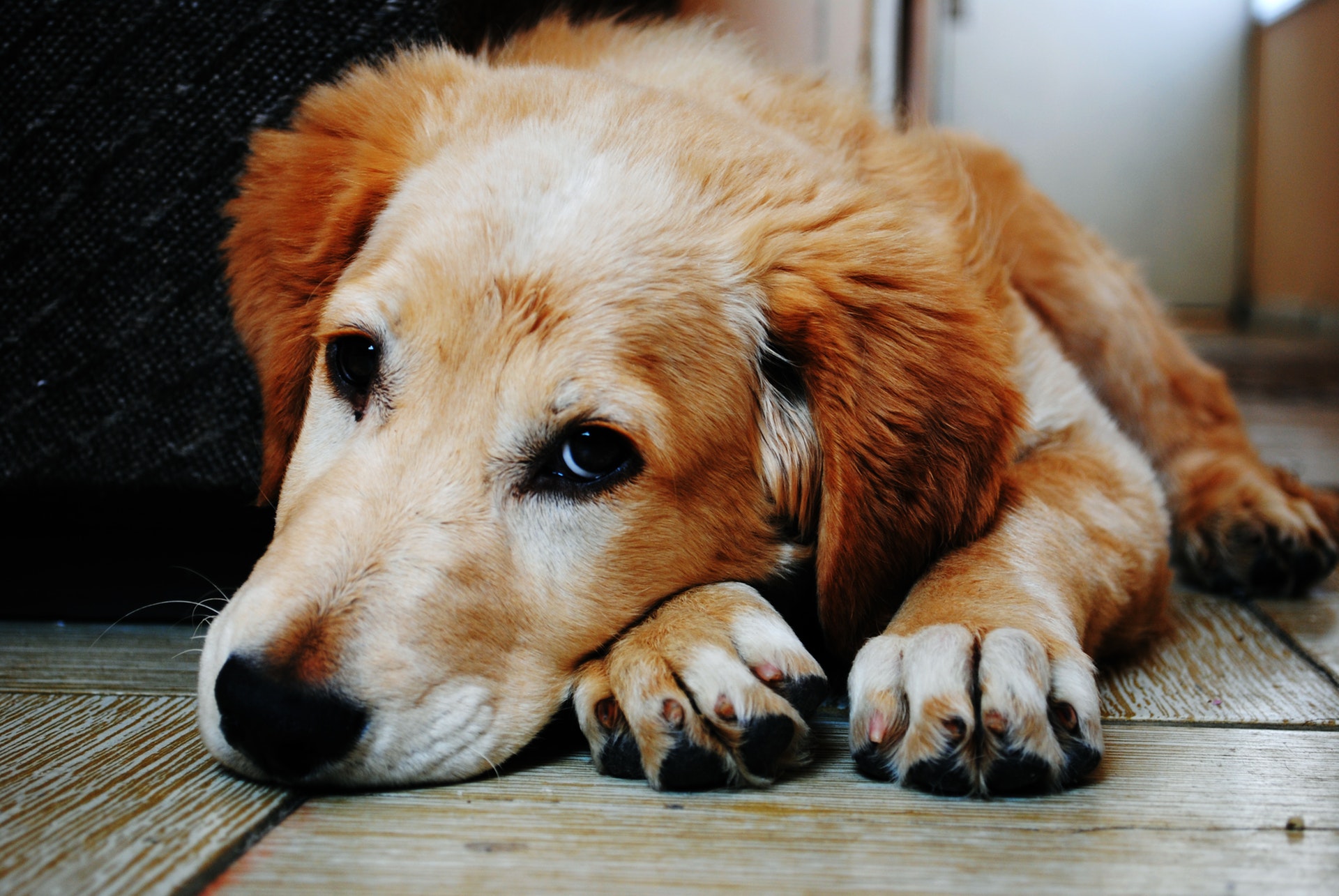If you’re googling ‘why is my dog nipping at visitors’ with ever-increasing desperation, I hear you. As do the thousands of other dog owners facing the exact same problem.
Dogs might nip for different reasons, but all those reasons have one thing in common – they’re frustrating. Not to mention embarrassing.
Even if the nip is nothing more than a friendly greeting, no one wants to be the friend with the nippy dog. And if those nips stop being quite so friendly… well, no one wants to be that friend either.
Now for the good news. If the nipping is exactly that (in other words, if it’s more like a pinch than a bite), it can often be managed effectively before it escalates into anything more serious.
The trick, as with most things canine-related, is:
a) establishing the root cause,
b) early intervention, and
c) consistency
Now, if you’re ready to nip that nipping in the bud (no pun intended) the first logical step is teaching your dog to be calm and in control of their emotion.
Because if you can ultimately teach your dog to relax, you’ll also find they’ll be a lot less likely to nip in any type of situation that triggers it.
So before you do anything else, I’d highly recommend checking out the short video below from Dan Abdelnoor (aka Doggy Dan) over at The Online Dog Trainer where he talks about a powerful calming technique that takes just minutes a day to implement.
Watch the video, follow the training, and you should see a marked improvement in your dog’s behavior around visitors a lot sooner than you think.
Anyway, here’s the link to take a look: Click Here To Discover How To Finally Stop Your Dogs Frustrating, Unwanted Nipping Using A Powerful Calming Technique That Takes Just Minutes A Day To Implement!
(video will open in a new window)
Why Is My Dog Nipping At Visitors?
In some ways, nipping is the most natural thing in the world. Ultimately, it’s a form of expression. While we express our emotions and thoughts through our words and our hands, dogs use their mouths.
They chew, they nip, they gnaw… they communicate.
The problem is, it’s a style of communication that’s not always appreciated. It’s especially not appreciated when it’s allowed to go unchecked. And therein lies the problem.
A sharp little nip from a puppy might be annoying, but it’s not dangerous. But a puppy that’s allowed to get away with it could soon stop nipping and start biting. And that’s when the real problems start.
Even a puppy that nips in a friendly way needs to be taught to stop. After all, a playful nip from a pup is one thing: a playful nip from a full-sized adult dog is quite another.
All nipping behaviors need to be treated as equal. It all needs to be discouraged. That said, treating your dog as an individual by figuring out the root cause of their behavior is going to be crucial in determining the right modification technique.
A dog who nips because they’re scared, for example, may need to be treated quite differently from a dog who nips because they’re protective.
Before jumping to the solution, take a moment to consider what could be motivating your dog’s behavior. Some of the most common reasons include:
They Want to Play
Puppies and young dogs don’t want to be cuddled all day long. They want to play.
If your visitor does anything to suggest a game (strokes them, claps their knees as though initiating a game, etc.), up goes the excitement, and down come the teeth.
Nipping like this has nothing to do with aggression. It’s simply an invitation to play.
They Haven’t Been Socialized
If your dog barks or nips at visitors, it could be a sign that they’ve not been properly socialized.
If dogs aren’t exposed to a wide variety of people, pets, and situations from an early age. They can become anxious or fearful around anything unfamiliar.
Unfortunately, fear and anxiety can often translate into displays of aggression.
The problem is particularly apparent in dogs who’ve experienced abuse or traumas in the past. As well as dogs who’ve spent most of their lives being passed from one temporary home to another.
Once dogs like this find a ‘safe-haven,’ they may feel the need to defend it against threats… including any visitors.
Related Post: How To Socialize An Aggressive Dog – A Step By Step Guide
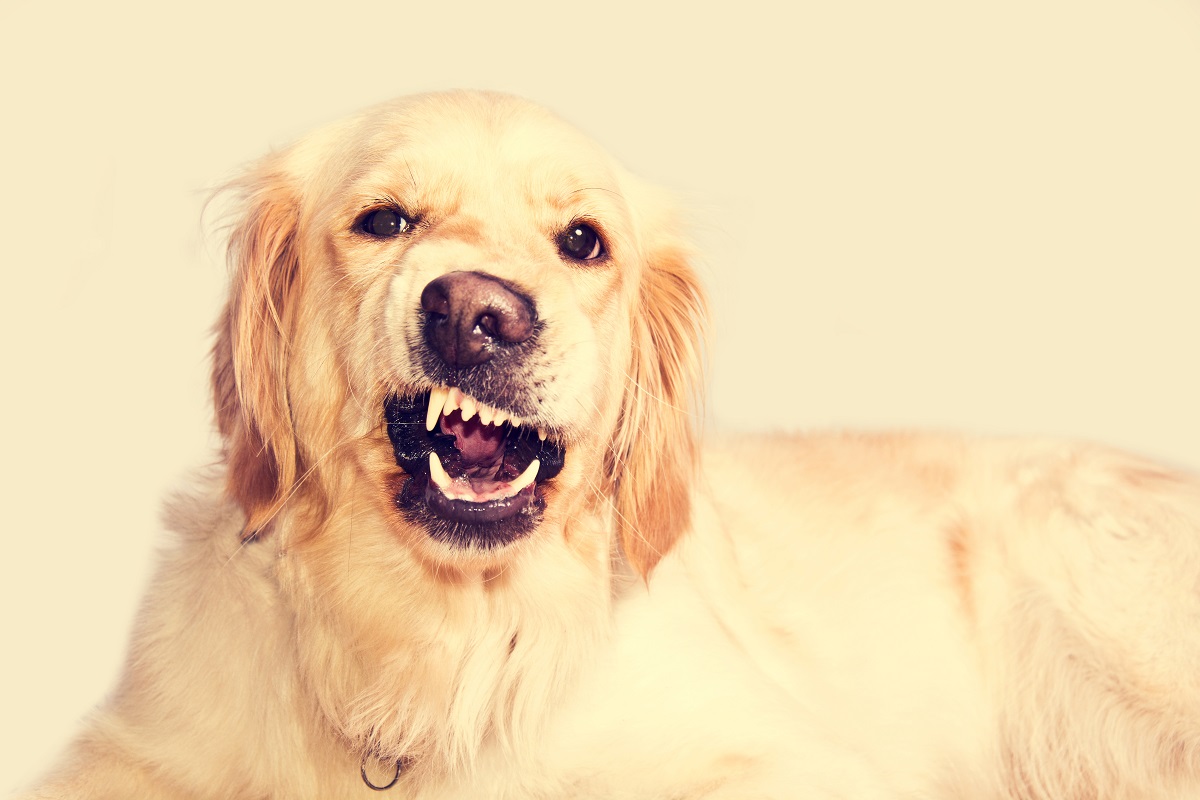
They’re Possessive
All dogs are possessive to an extent (as are humans, when you think about it) but left unchecked, it can quickly develop into a problem.
While some dogs can get super possessive about high-value items like toys or food. Others can get possessive about people.
If your dog thinks they ‘own’ you. They may nip or display other undesirable behaviors at any visitors who get in between you and them.
It’s in Their Genes
Herding breeds like Corgis, Collies, and German Shepherds have a higher risk of nipping than other breeds.
The reason is simple enough. As working dogs, their function was to herd sheep and cattle. Nipping at the heels of the animals was the easiest way of getting them to move.
That instinct is still there… even if rounding up your guests is a lot less useful than they think it is.
They’re Old and Grumpy
Older dogs need plenty of rest. They like their beds. They like their naps. And they don’t like it when something comes along and disturbs them.
If your visitor approaches them when they’re in the middle of a good, long snooze. Your dog may wake up confused, disoriented, and liable to nip in frustration.
It’s a Habit
Nipping is part and parcel of being a pup. They don’t necessarily understand what their teeth are for.
Mostly, they think that snapping at anything that’s dangled in front of them, whether that’s a toy or a hand, is just part of the game.
Some owners are happy enough to let the behavior continue – after all, a nip from a puppy isn’t exactly painfully.
The problem is that a puppy doesn’t stay small forever.
And if the behavior isn’t corrected, your dog will grow up thinking nipping is just part of the same game as before. Once they (and their teeth) reach maturity, that’s a problem.
This is where Dan’s step-by-step training program over at The Online Dog Trainer play a necessary role in stopping unwanted nipping.
Because although nipping isn’t essentially painful… Biting is just the opposite.
So getting to grips with nippy behavior before it escalates and causes some real damage is a must if you ever want visitors to your home to trust you.
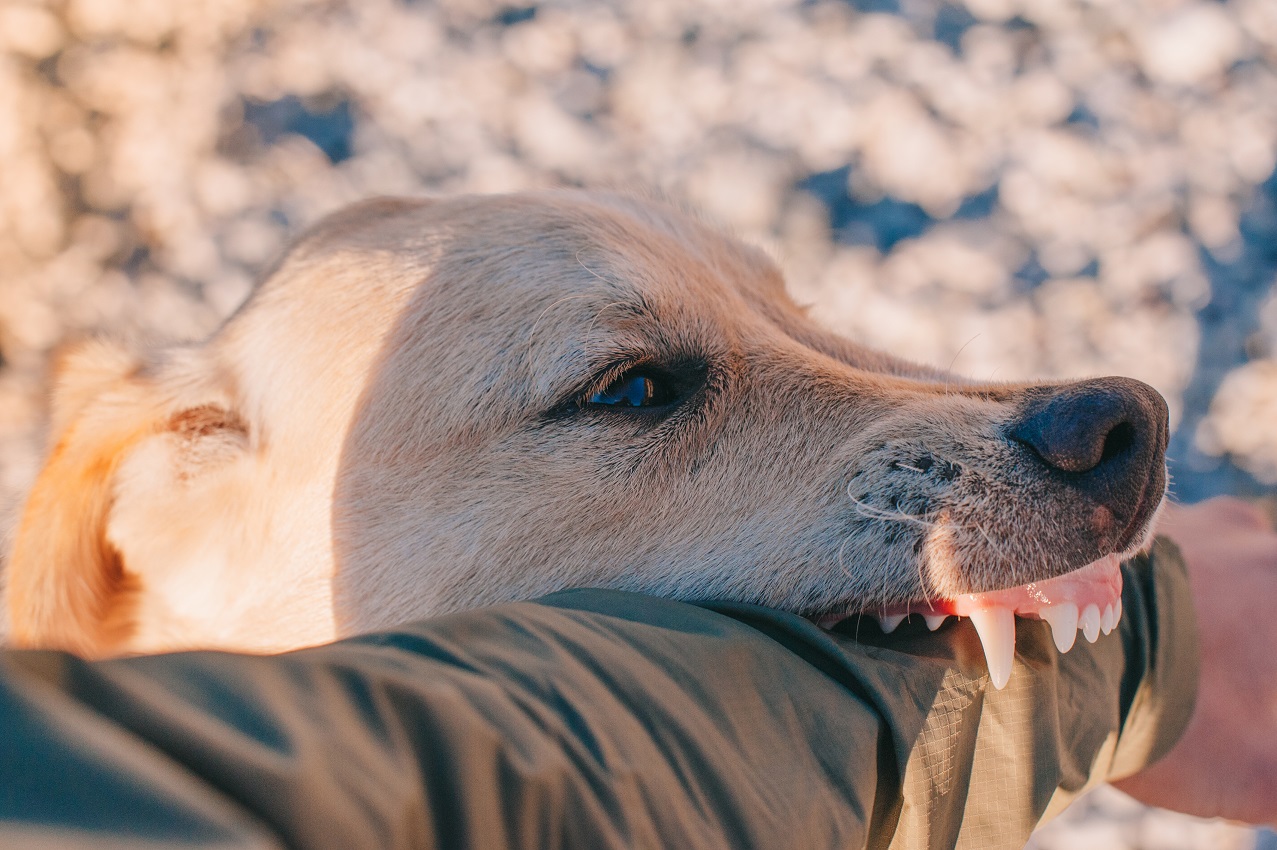
How to Spot the Difference Between Playful and Aggressive Nipping
Many types of mouthing and nipping are playful. But some types aren’t.
If a dog who nips out of fear and frustration isn’t managed appropriately. The occasional nip can easily escalate into aggression.
Recognizing the difference between a playful nip and one that’s intended as a ‘warning’ isn’t always easy.
That said, there are a few telltale signs that give the game away.
When a dog is showing aggression, they tend to adopt a stiff, rigid posture. They may tense their muzzle and curl their lips to expose their teeth.
Dogs who simply want to play will have a loose, relaxed posture. Both dogs may growl. But whereas a low-pitched, guttural growl is a sign of aggression, a high-pitched, sharp bark is a sign of play.
How to Stop Your Dog Nipping at Visitors
Before you can stop your dog from nipping, you need to identify the root cause. Although any kind of nipping should be discouraged, different motivations need different treatment.
Consider factors like your dog’s age, whether the nipping is generalized or happens only around guests, and whether your dog displays any other fearful or aggressive behaviors.
When it comes to training, you need to think about the big picture. It might be embarrassing when your dog nips a visitor, but the problem is the nipping, not the target.
If you want to address the problem, you need to address the nipping, period.
Trying to stop your pup from nipping a stranger’s hand isn’t going to work if you let them carry on nipping your own hand during play.
Remember, dogs respond to consistency. Whether there’s a visitor in the house or not, keep working on discouraging negative behaviors (whether they’re playful or not) and encouraging positive ones.
Let Them Know It’s Not Appreciated
If a puppy nips, it’s very likely they’re either teething or initiating play. Even though there’s no malice behind what they’re doing, they still need to learn that their teeth don’t belong anywhere near human skin.
Each time they nip, say “No Bite” in a loud voice and end the game. Soon enough, they’ll connect the dots and realize that when they nip, the fun stops.
Once they understand that, you should see a dramatic improvement. Let your visitors know to react in the same way to reinforce the training.
If they’re teething, be sure to keep them supplied with chew toys that satisfy their need to chew safely.
If your dog has left the puppy stage but is still hanging onto their playful nipping habit, apply the same strategy. Providing you’re consistent with the message, it won’t take too long for them to cotton on.
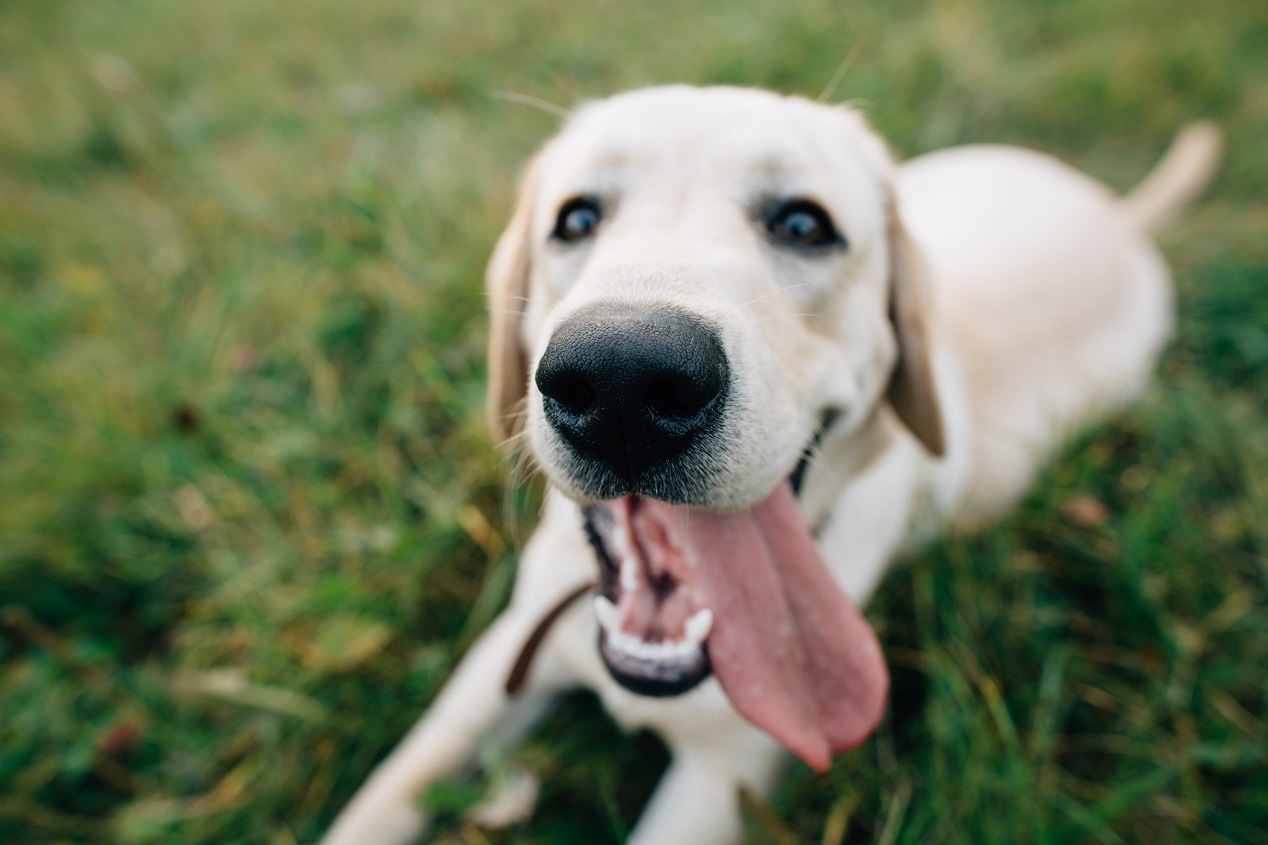
Avoid Provocative Games
If a dog mouths out of boredom or because they’re looking to play, finding a new outlet for their energy is crucial.
Avoid playing games that encourage mouthy behaviors (tug of war, etc). And stick to games that allow your dog to let off some steam without engaging in any undesirable behaviors.
Keep Your Hands to Yourself
If your puppy has a habit of nipping at your hands in a playful way, you need to teach them that fingers aren’t playthings.
Avoid using your hands to initiate play. Patting the sides of their face, waving your hands around, or ‘roughhousing’ will just perpetuate the idea that your hands are part of the game.
As you’re playing, don’t try to remove a toy from your dog’s mouth with your hands. Issue a firm command like ‘drop it’ instead.
If they do end up nipping you while you’re playing, avoid jerking your hand away. It may seem the most natural reaction, but you might unwittingly encourage your dog to lunge for them again.
Let your hands go limp instead- it’ll make them much less fun to play with.
Avoid Negative Punishment
If your dog mouths you or your visitor, don’t use punishment as a corrective method.
This means no yelling, no slapping, and nothing that could hurt or frighten your dog.
Not only does behavior like this make your dog scared of you, but it also risks turning a playful behavior into an aggressive one.
Get Them Checked Out
If your dog has only recently started nipping, and if the nipping is accompanied by any other out-of-character behavior, something might be wrong.
If you’ve any reason to suspect a health issue could be to blame for their behavior, get them checked out by a vet as soon as possible.
Calm Them Down
It sounds obvious I know, but calming your dog down and teaching them to be in control is a surefire way to deal with the issue.
Counter conditioning techniques that replace your dog’s negative associations with visitors with positive ones can also be used to great success. As can introducing calming techniques into your routine.
So before visitors arrive, take a few minutes to run through some of the calming techniques you’ll learn in The Online Dog Trainer Program.
Not only will they teach your dog to remain calm, but they’ll also teach your dog to control the natural impulses that trigger unwanted nipping.
 Final Thoughts
Final Thoughts
In a lot of cases, a dog who nips is doing it out of play rather than aggression. But that doesn’t mean it’s ok to let it continue.
The sooner your dog learns that any form of tooth-skin contact is not ok, the better.
Not only does it decrease the risk of those playful nips turning into something more serious down the line. But it also makes it way less embarrassing when visitors turn up at the door.
Find the root cause and apply the solution. That might be easier said than done, but with a hefty dose of consistency and patience, you’ll get there.

